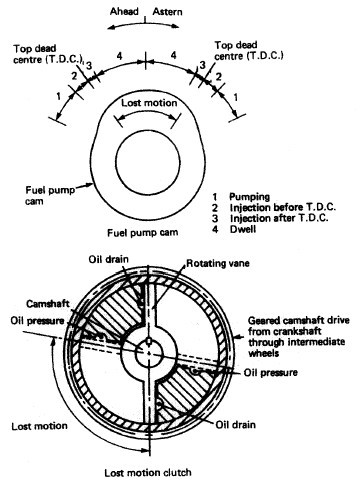 Home || Diesel Engines
||Boilers||Feed Systems
||Steam Turbines ||Fuel Treatment ||Pumps ||Refrigeration ||
Home || Diesel Engines
||Boilers||Feed Systems
||Steam Turbines ||Fuel Treatment ||Pumps ||Refrigeration ||
Turning Gear & Reversing Gear for Marine Diesel Engine
The diesel engine is a type of internal combustion engine which ignites
the fuel by injecting it into hot, high-pressure air in a combustion
chamber. In common with all internal combustion engines the diesel
engine operates with a fixed sequence of events, which may be achieved
either in four strokes or two, a stroke being the travel of the piston
between its extreme points. Each stroke is accomplished in half a
revolution of the crankshaft.



